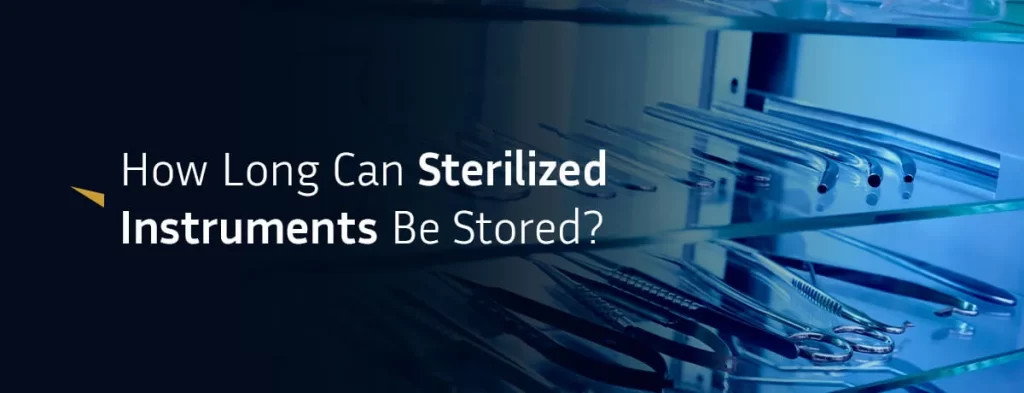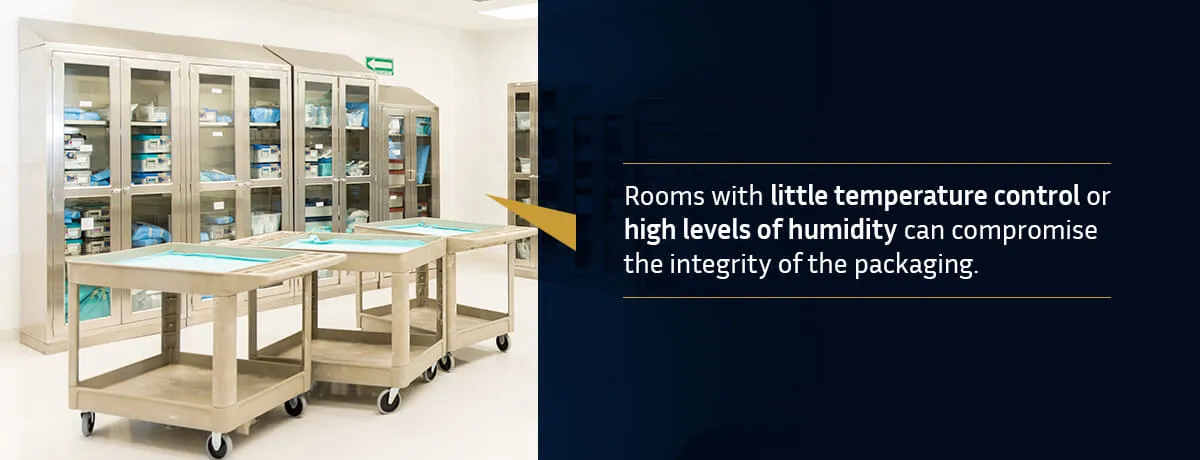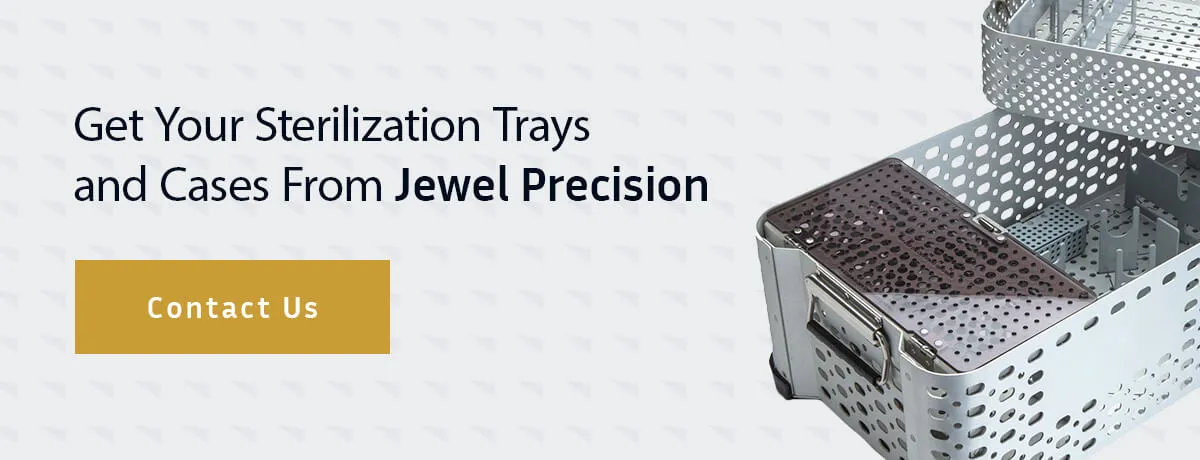
Sterilization is an important process for your medical facility, and maintaining your sterilized instruments’ integrity in storage can significantly impact your operations. Storing sterilized instruments is a common concern, and medical facilities may use varying approaches.
In this article, learn more about the sterilization process and how many days your autoclaved items remain sterile while in storage.
Why Is Sterilization Important?
A sterile item is completely free from bacteria and other microorganisms. While this state is challenging at best in everyday environments, hospitals and other health care settings must have sterile instruments to ensure their use is safe for patients. However, removing all the bacteria and microorganisms from an instrument or surface is more complex than simply wiping them down with a cleaner.
While household cleaners can be up to 99.999% effective at eliminating bacteria and germs, sterilization takes it a step further. The sterilization process removes all types of microbial life. Eliminating all microorganisms ensures things like gloves, instruments, implants and other items used on patients are free from diseases and infection-causing bacteria.
Sick patients are particularly vulnerable to the introduction of diseases and infections through medical instruments, so be sure everything you use is sterilized. Instruments you’ll need to have in storage include:
- Forceps.
- Scalpels.
- Surgical plates.
- Medical screws.
- Surgical implants.
What Determines the Shelf Life of a Sterilized Item?
While some people may view shelf life and expiration dates as the same thing, there’s an important difference.
Some manufacturers may include expiration dates, which indicate how long an instrument can function as it should. In contrast, shelf life refers to the sterility of items and how long they can remain sterile. Because sterilization is an important process, there are a few essential factors that determine the shelf life of a sterilized item.
1. The Shelf Life Practice
There are two main shelf life practices that medical facilities might implement.
Some might utilize the traditional date-related shelf life practice. This method, commonly referred to as “first in, first out,” means that those items sterilized first are the ones used first. With this process, users mark every package with the date of sterilization.
However, regulations are changing around shelf life practices, and many medical facilities are moving toward event-related shelf life. Since a product is sterile until something damages the barrier’s integrity, this practice prioritizes events over dates.
2. The Storage Area
Where the items are stored can have a significant impact on their sterility.
Items on open shelves have a high likelihood of contamination as they are exposed to the outside air and dust particles. If they’re on closed shelving or in drawers, the likelihood of contamination is significantly lower, so they may have longer shelf life sterility.
Another important consideration is the environmental condition of the storage area. Rooms with little temperature control or high levels of humidity can compromise the integrity of the packaging. Similarly, if the room is dirty, dust and other debris in the air could potentially impact the instruments’ sterility. Dust covers and sealing can help protect instruments in these kinds of environments.

3. The Condition of the Packaging
Before using any packaged sterile instruments, a close inspection of the packaging is essential to ensure nothing has compromised the instruments’ sterility. If there are any water marks, rips or other damage to the package, it should go through another sterilization process. Overhandling can also impact the packaging and the sterility of the instruments inside.
How Long Should Instruments Be Autoclaved?
An autoclave works like a pressure cooker, using steam sterilizers to eliminate any trace of microorganisms on a medical instrument. You can find autoclaves of various sizes — some as small as microwaves and others that take up most of a room.
The steam breaks down the cell walls of microorganisms, which makes the timing for autoclaving instruments very particular. The steam has to reach a certain temperature for a certain amount of time to facilitate the breakdown of microorganisms’ cell walls. The two most frequent temperatures for autoclaving are 121 C and 132 C. If you’re using a gravity displacement sterilizer at 121 C, you’ll need to maintain that temperature for 30 minutes. Meanwhile, a pre-vacuum sterilizer at 132 C takes only 4 minutes.
Sterilization times may also vary according to the instrument and type of packaging.
How Should Sterilized Instruments Be Stored?
When instruments go through the sterilization process, they do so in a type of packaging that allows the sterilizing agent to penetrate and effectively sterilize the instruments. The type of packaging depends heavily on the method of sterilization — since autoclave sterilization uses steam, the steam should be able to penetrate the material easily to sterilize the instruments effectively.
After the sterilization process is complete, you should store the instruments somewhere that shields them from water or dust penetrating the packaging. This means avoiding any cabinets or drawers under sinks, near taps or underneath water pipes. Similarly, you should choose a contained area to minimize the dust and other particles that might settle on the packaging out in the open.
The best way to store sterilized instruments is in a cabinet or drawer that closes securely. Keeping the packaging clean, intact and dry will help the instruments reach their maximum sterilized lifespan and prevent cycles of resterilization.
How Long Are Instruments Sterile After Autoclaving?
The length of time your instruments will stay sterile after autoclaving is heavily dependent on the conditions of the storage area and the packaging.
The most important factor in how long autoclaved instruments are sterile is the packaging — it should be dry and intact, and not be handled too much. Given ideal conditions, studies found that autoclaved sterilized instruments can be stored safely for up to 96 weeks.
Get Your Sterilization Trays and Cases From Jewel Precision
You need dependable cases and trays that can withstand various sterilization methods and protect against corrosion. We use high-quality, medical-grade materials to ensure our products offer superior protection from even the harshest conditions.
Choose from a variety of solutions, such as:
- Custom systems: Made to your facility’s specifications, these custom cases can meet your exact needs.
- Modular systems: With heightened organization and protection, you can be sure your instruments are protected with our modular systems.
- Rigid reusable systems: Our rigid instrument cases ensure your surgical tools have maximum protection throughout management, storage and transportation.
Contact our team to learn more about our products or to get a personalized quote.
